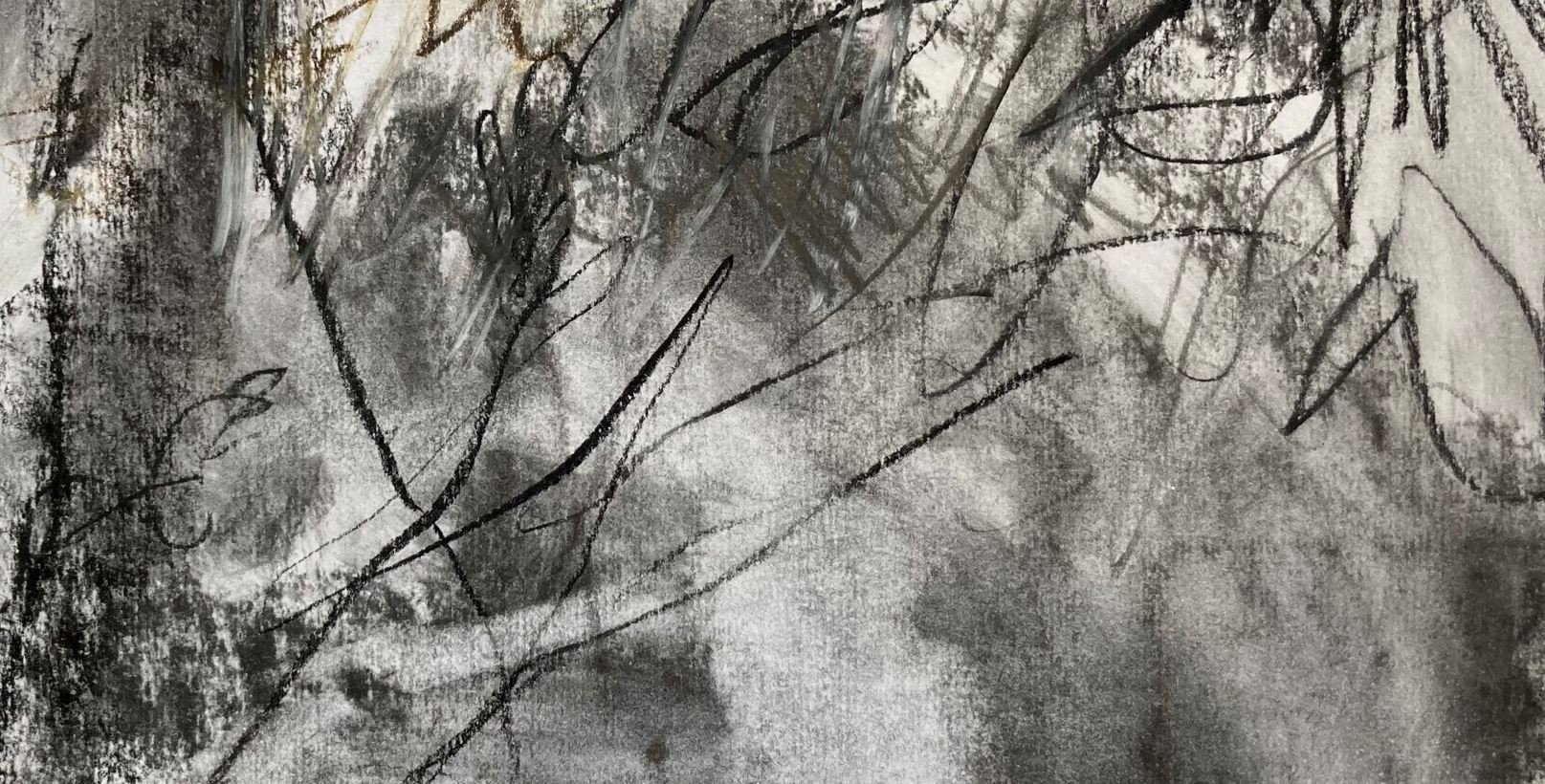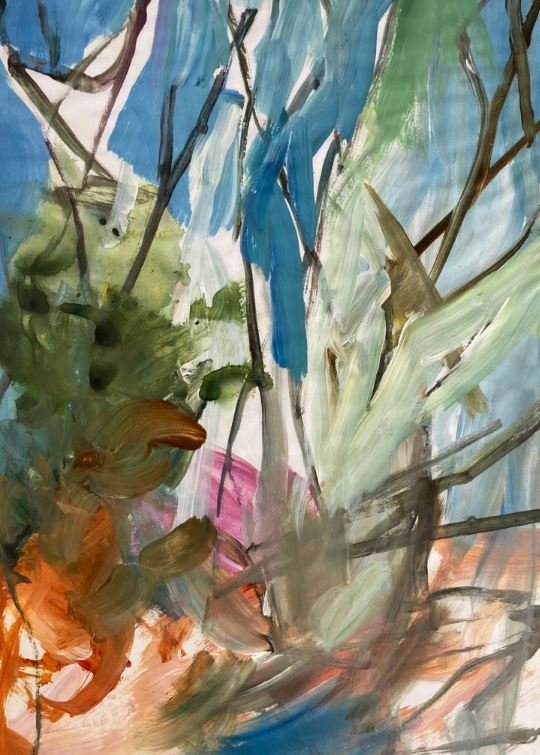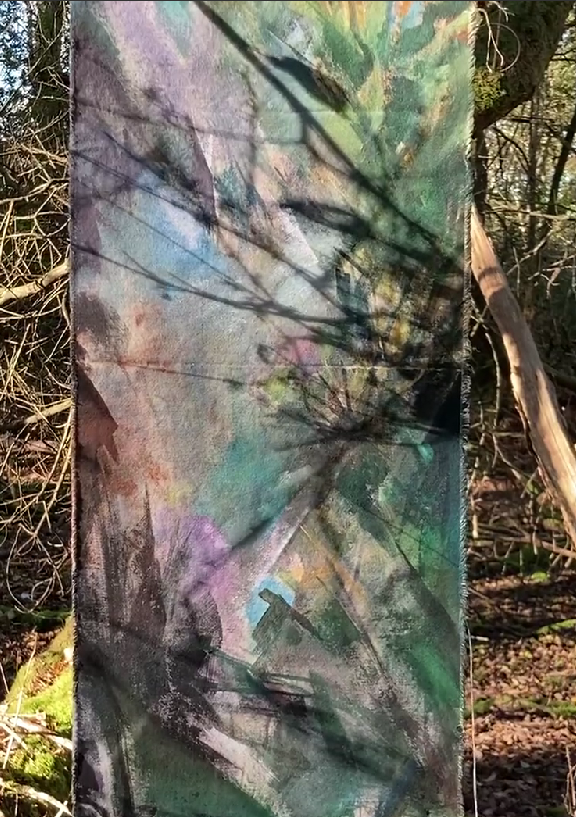Painted Space
‘Space’ is more abstract than ‘place’ . What begins as an undifferentiated space becomes place as we get to know it better and endow it with value’ (Tuan, 2011)*
‘Painted Space’ is an 18-month project centred on Grimdsyke Woods at Old Redding in Harrow Weald. It set out to track the process of familiarisation with a place and to explore what that means through painting.
*Humanist geographer Yi-Fu Tuan, writing in ‘Space and Place: The Perspective of Experience’, 2011
Our sense of space and place is not fixed or static, it is bound up with experience, memory and perception as well as the actual surroundings. Fragments of visual images, thoughts and senses are juxtaposed and jostle for attention. My interests lie in how we experience a landscape space; the project explored how these sensory experiences can be translated into painting.
The paintings are inspired by the ancient woodland of Grim’s Dyke and by the writing of French philosopher Gaston Bachelard (1884-1962) in his book The Poetics of Space. The estate was home in the early 20th century to English dramatist, librettist and poet W.S. Gilbert. It is a peaceful place, bordered on two sides by Grim’s Ditch, one of the several Roman earthworks in Southern England. The swampy ornamental lake and surrounding woodland was the focus for the project. In 1911, Gilbert drowned there whilst trying to rescue a friend; surrounded by magnificent high rhododendrons the area has a sense of tranquillity belying its history.
Through walking, sketching and photography, ideas for the paintings gradually evolved. Several were made on unprimed canvas; these canvases had been left in the swampy edges of the lake for several weeks to absorb and become stained with water and woodland debris before being used for painting.
Sketching at the lake
Sketches in chalk, charcoal & black ink (click image for full view)
Memory paint sketches (click image for full view)
Retrieving the canvases which had been left to soak for several weeks
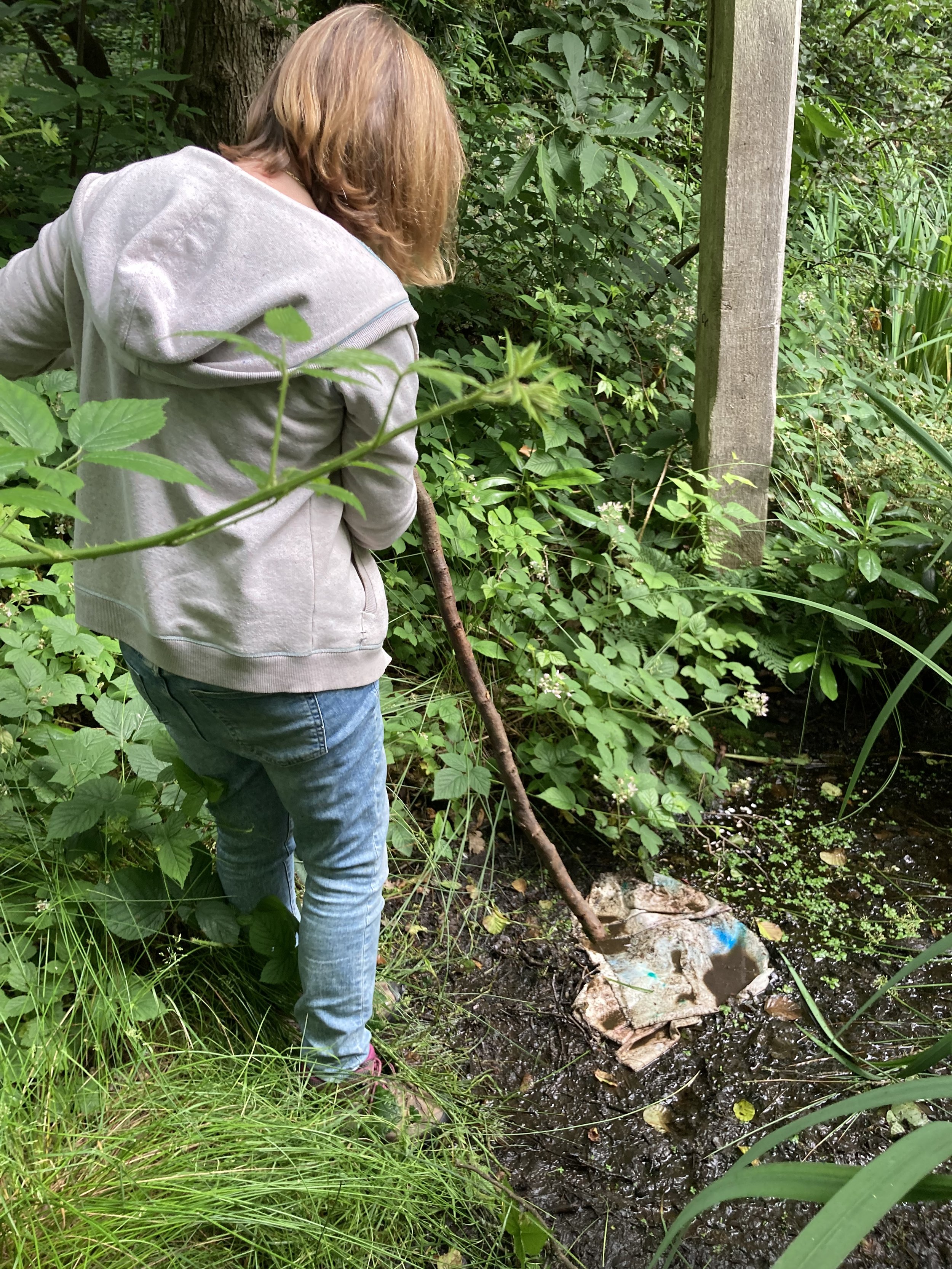
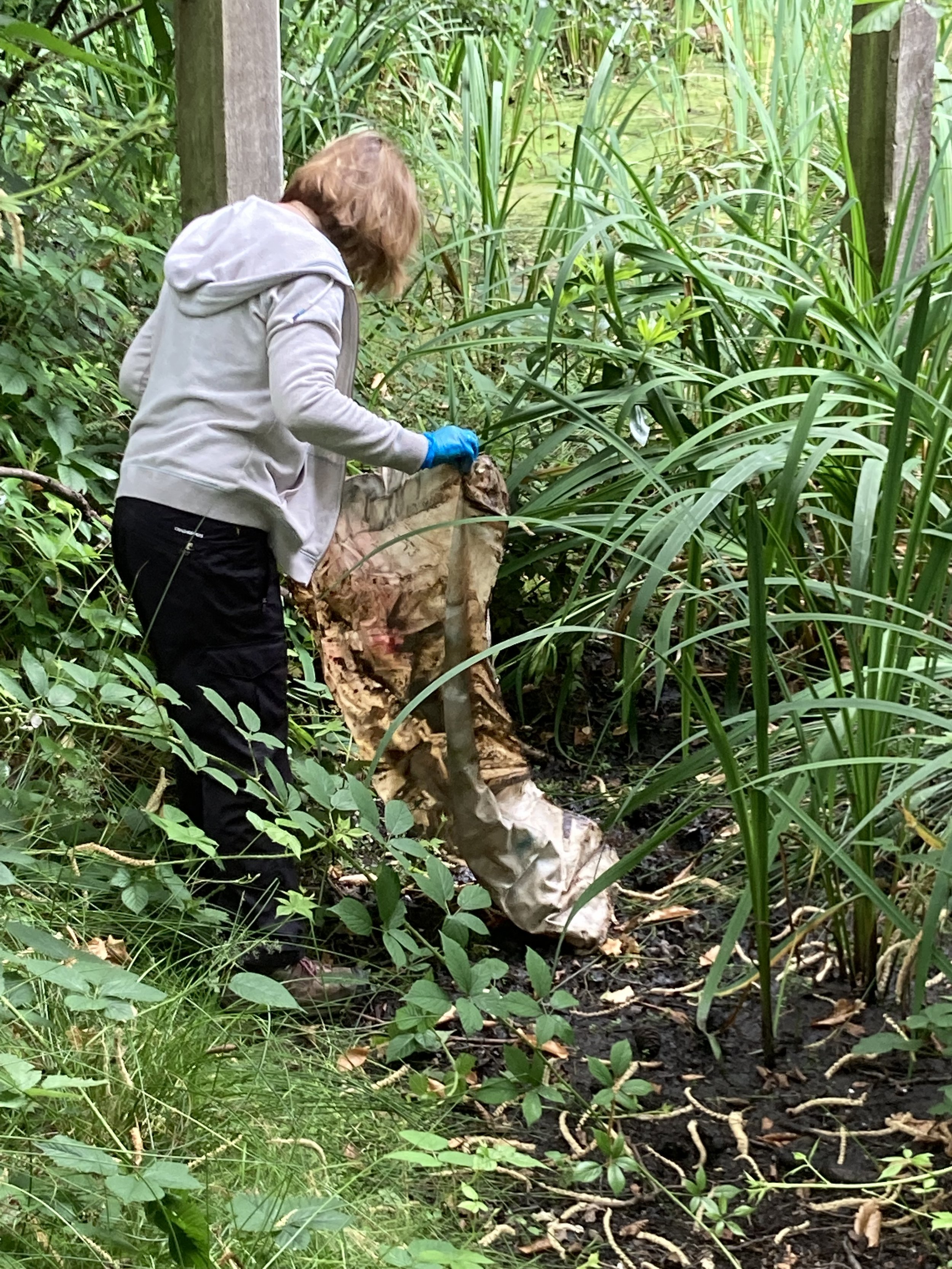
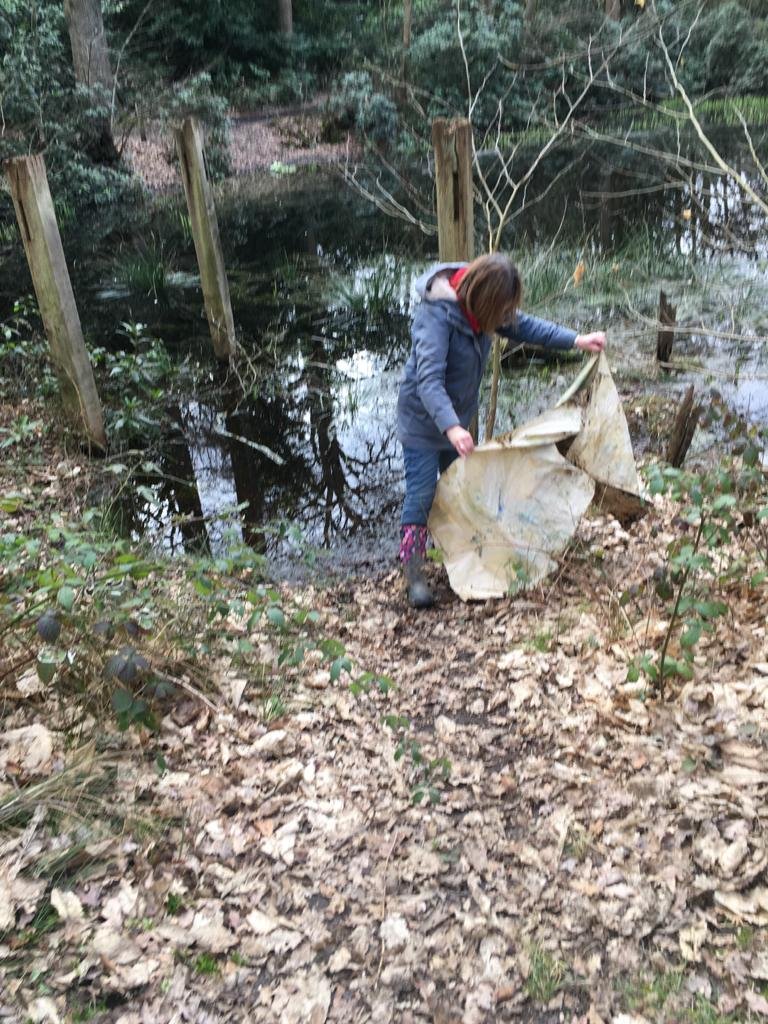
Completed paintings on unprimed canvas. In these works, paint has seeped through to the reverse side of the canvas to form a delicate but distinct mirror-like image. (Click on image for full view)
The unprimed canvas paintings were sited in and around the lake, thinking about the space of the surrounding woodland and how the painting would integrate with the environment.
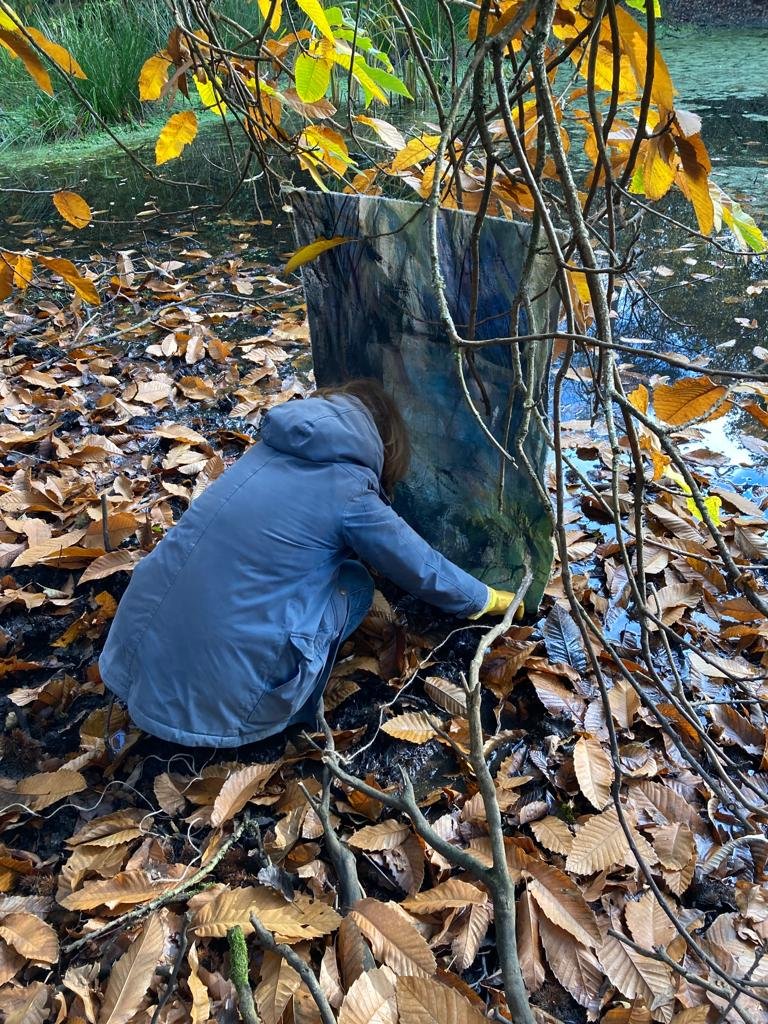



Canvases in their final positions
Photo Credits: Colin Sharp colinsharpphotography.com
Photographing the canvases in the woods led to the development of work inspired by the fractured images and reflections on the lake, such as these paintings below.


Original ideas to stage an exhibition at the lake have been put on hold temporarily due to rewilding development planned for Autumn 2022. Considering an alternative indoor venue has opened up exciting opportunities to curate the work with the space of the woods in mind.
‘Everything, even size, is a human value … miniature can accumulate size, it is vast in its way.’ (Gaston Bachelard)













